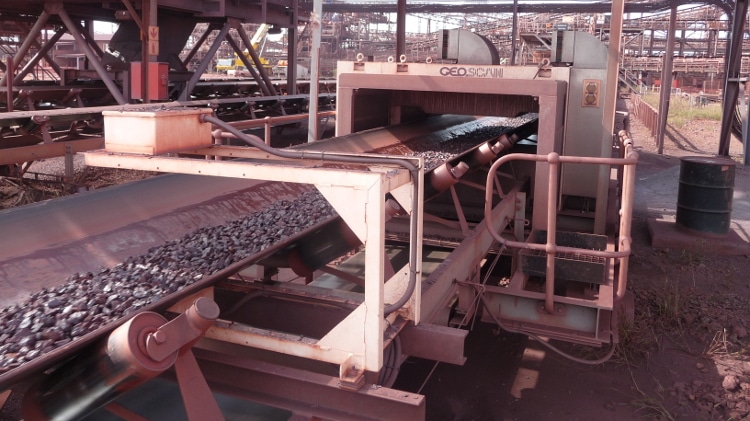Ore-sorting is a process for upgrading mineral bearing rock. Current technology supplies two different types of ore sorting: Bulk and Particle . Current studies indicate the CuMo will most likely use both types of sorting in order to improve mill feed grades and potentially lower costs.
Bulk sorting involves scanning crushed material on a conveyor belt or within a shovel load, using various scanning techniques to identify the grade of bulk sections of the mined material. For example, bulk sorters are currently in operation that can scan material crushed at 60 mm size (2.5 inches) at the rate of 5,000 tons per hour using Proton Neutron Gamma scanner (PGNAA). This allows the feed to be divided into blocks /packets of various sizes depending on the width and speed of the conveyor belt and the scan time. The material can then be separated using flow diverters into three grades waste, middling’s and mill feed. Middling’s can be forwarded for additional finer level sorting.

Particle sorting is typically between 250mm and 10mm (1 to 4 inches) and involves evaluating the mineral content of individual rocks as they pass through a sensor then separating them into Accept and Reject fractions, based on pre-determined selection criteria.
Ore-Sort – General
Ore-Sort – Tungsten